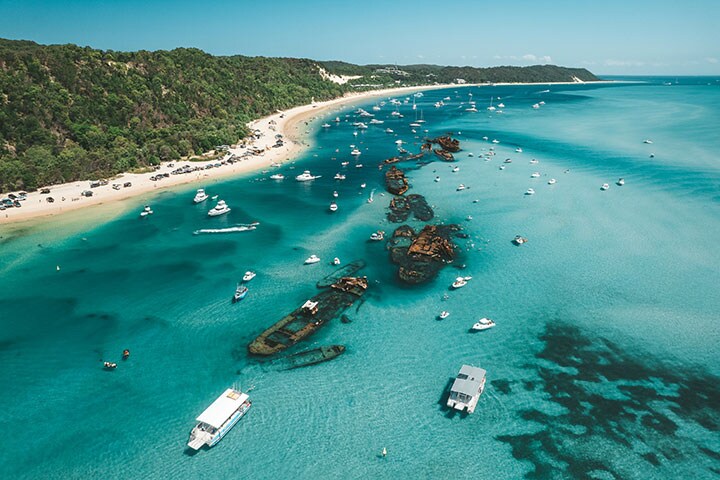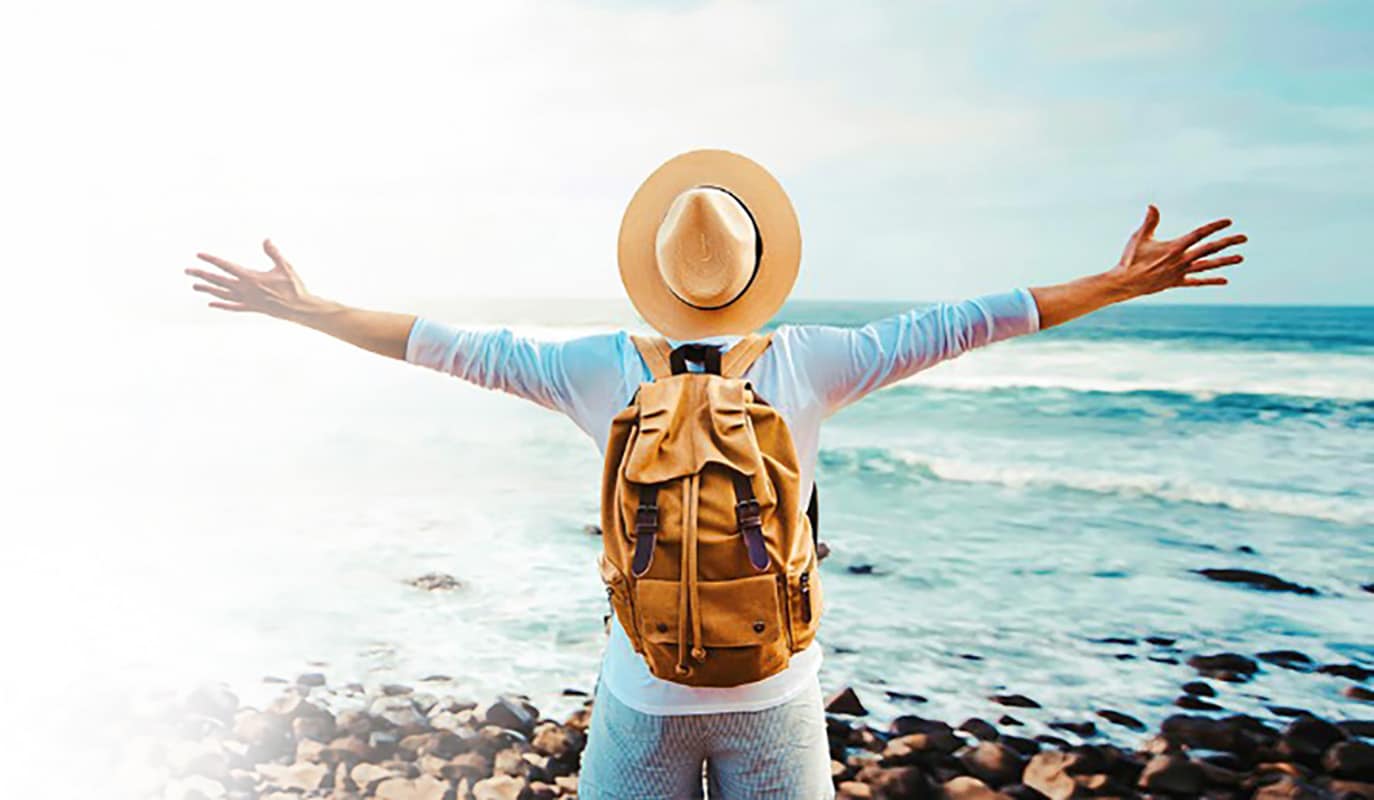A sun-drenched city with a laid-back charm and vibrant atmosphere, Brisbane's reputation for outdoor adventures, incredible food and cultural attractions make it an easy choice for any kind of getaway!
Brisbane, Queensland's capital, is famous for its sunshine and warm climate, vibrant arts precincts, and stunning riverside landscapes. From the scenic South Bank Parklands and bustling Queen Street Mall to the iconic Story Bridge and nearby Moreton Bay islands, the city offers something for every traveller. Whether you're here to enjoy the outdoors, explore the latest restaurnts and bars on Howard Smith Wharves, or simply want to escape to its warmth, our Brisbane travel guide will help plan an incredible trip.
Popular flights to Brisbane
Frequently asked questions about travelling to Brisbane
-
When is the best time of year to fly to Brisbane?
The best time of year to visit Brisbane depends on your priorities, but overall, October is the best month. The weather is warm, humidity and rainfall is typically low, crowds are minimal as it’s outside peak season, and you’re more likely to find great deals on flights and accommodation.
March and May are also great times to visit for similar reasons.
But if you want to know the best time to go for ideal weather, a family holiday, or more read our guide on the best times to visit Brisbane.
-
What is the weather like in Brisbane?
Brisbane has a humid sub-tropical climate, known for its year-round warmth and sunshine.
- Summers (Dec – Feb): Hot, humid, and rainy, with potential for afternoon storms.
- Winters (Jun – Aug): Pleasant and mild, making it a great time for outdoor activities.
- Spring (Sep – Nov) and autumn (March – May): Warm and comfortable with lower humidity and less chance of rain.
For those travelling to Brisbane between November and April (Queensland’s cyclone season), be prepared for the possibility of heavy rain and strong winds.
Read more in our guide to Brisbane’s weather and climate.
-
What to pack for your trip to Brisbane?
No matter what time of year you travel to Brisbane, it’s a good idea to pack lightweight clothing in breathable materials, comfortable walking shoes, sunscreen, and sunglasses. Here are some other packing items depending on the season you’re travelling:
- Summer: Swimwear, rain jacket, umbrella, insect repellent
- Autumn: Light jacket, small umbrella,
- Winter: A light jacket
- Spring: Walking/hiking shoes, light rain jacket.
-
How many days do you need to visit Brisbane?
Three days in Brisbane will give you plenty of time to check out Brisbane’s main attractions, enjoy the vibrant riverside, and experience its thriving restaurant scene. Adding a few more days will give you the opportunity to plan for some great day trips to nearby areas, like Moreton Island, North Stradbroke Island, or the Scenic Rim.
-
What are Brisbane's top attractions?
Brisbane is teeming with culture, natural sights, galleries, parklands, markets and more. There are attractions to suit every traveller – here are some we recommend adding to your itinerary:
- South Bank Parklands
- Lone Pine Koala Sanctuary
- Roma Street Parkland
- City Botanic Gardens
- Howard Smith Wharves
- New Farm Park
- Eat Street Northshore
- Queensland Cultural Centre
- Sir Thomas Brisbane Planetarium
- Museum of Brisbane
Check out more top Brisbane attractions and the best things to do in Brisbane.
-
What are the best free things to do in Brisbane?
There are plenty of fun attractions and activities that won’t cost a thing! Some of our favourite free things to do in Brisbane include:
- Swimming and relaxing at Streets Beach in South Bank Parklands
- Stargazing at Sir Thomas Brisbane Planetarium
- Seeing one of the permanent exhibitions at QAGOMA
- Riding the CityHopper ferry along the Brisbane River
- Watching the sunset at Kangaroo Point Cliffs
-
Are there any day trips worth taking from Brisbane?
Whether you’re looking for a beach escape, a snorkelling adventure or a hike in nature, there are plenty of day trip options near Brisbane. Some of the best day trips from Brisbane include:
- Noosa, for its beautiful beach and stunning coastal walk.
- Moreton Island, for a snorkelling adventure of the Tangalooma Wrecks.
- North Stradbroke Island, for wildlife and nature.
- D'Aguilar National Park, for its scenic views and bushwalks.
- Scenic Rim, for wine, hikes and a charming countryside escape.
- Mount Tamborine, for hinterland lanscapes, hiking to waterfalls and wineries.
-
What are the best areas to stay in Brisbane?
The best area to stay in Brisbane depends on your priorities and preferences, but generally, the best places are:
- For first time visitors: Brisbane City or South Bank
- For families: South Bank
- For business travellers: Brisbane City or South Bank
- For nightlife and good food: Fortitude Valley or West End
For more, check out our guide on the best areas to stay in Brisbane.
-
What is the best way to get around Brisbane?
You have several options for getting around Brisbane, including buses, trains, ferries, rideshare and taxis, as well as driving. Walking and cycling are also great options for getting around, seeing the city and keeping active.
Check out our guide on getting around Brisbane.
-
Does Brisbane have good public transport?
Yes, Brisbane has a great public transport network run by TransLink that includes buses, trains and ferries. The CityCat ferries are a highlight, offering a scenic and efficient way to travel along the Brisbane River. Buses and trains connect major suburbs, and it’s worth noting that public transport is less frequent at night and in some outer areas.
Use the Brisbane journey planner to find the best route to your destination and pick up a TransLink go card for easy travel across all bus, ferry and rail services in South East Queensland.
When exploring the CBD, take advantage of Brisbane's free transport options, like the City Loop and Spring Hill Loop bus services, which depart from the CBD every 10 minutes during weekdays (7am-6pm).
-
Is Brisbane a walkable city?
Yes, Brisbane’s city centre and inner suburbs are very walkable, with pedestrian-friendly areas like South Bank, Queen Street Mall, and the Botanic Gardens. However, if you’re interested in travelling further out to the suburbs and exploring different areas, buses, ferries, or rideshare are better options.








